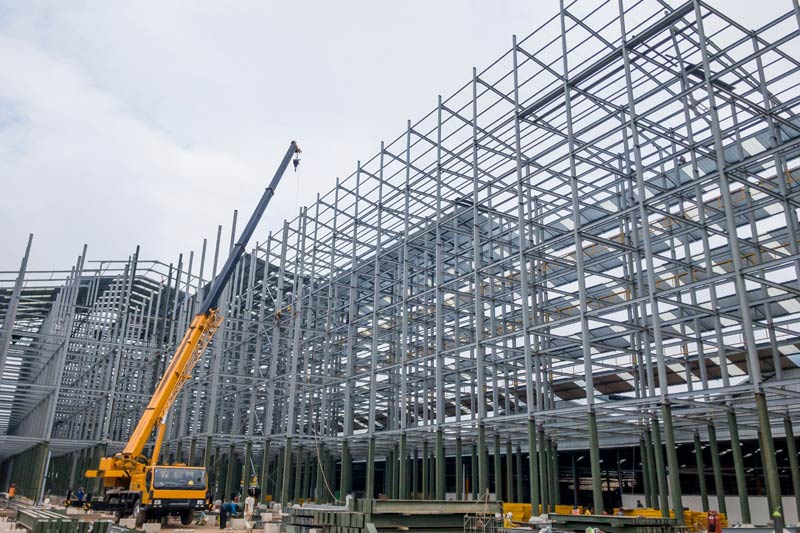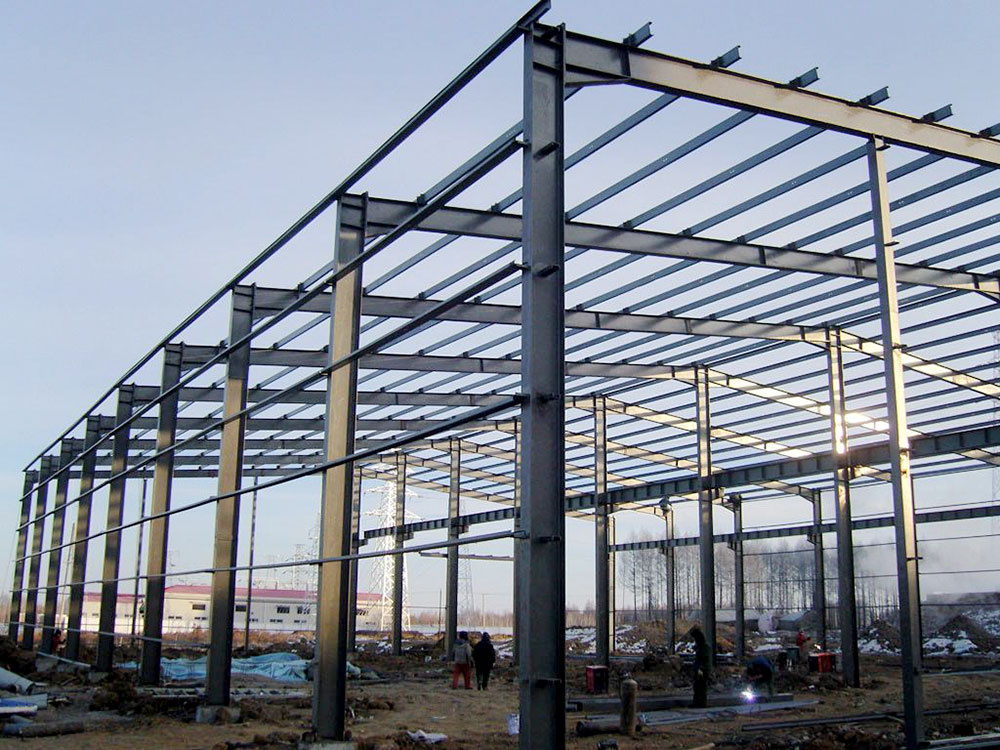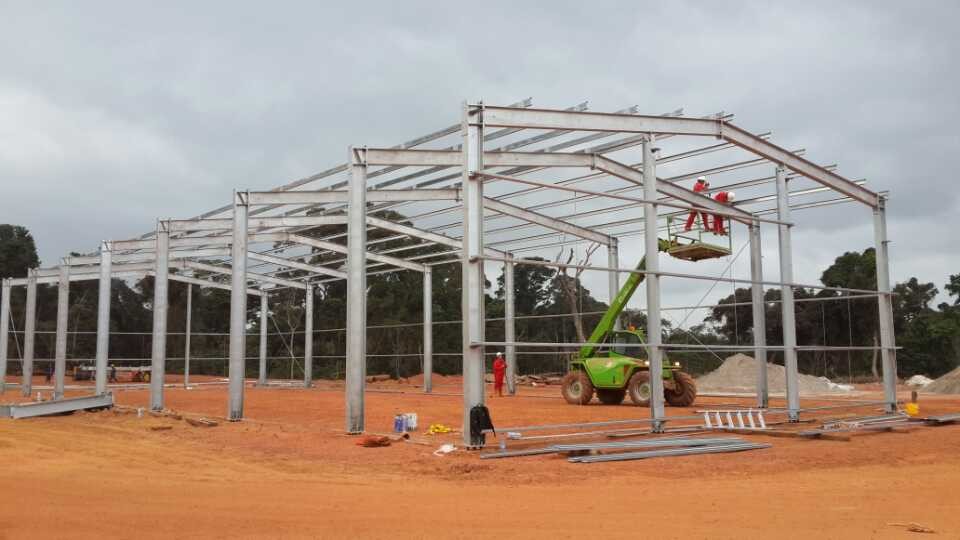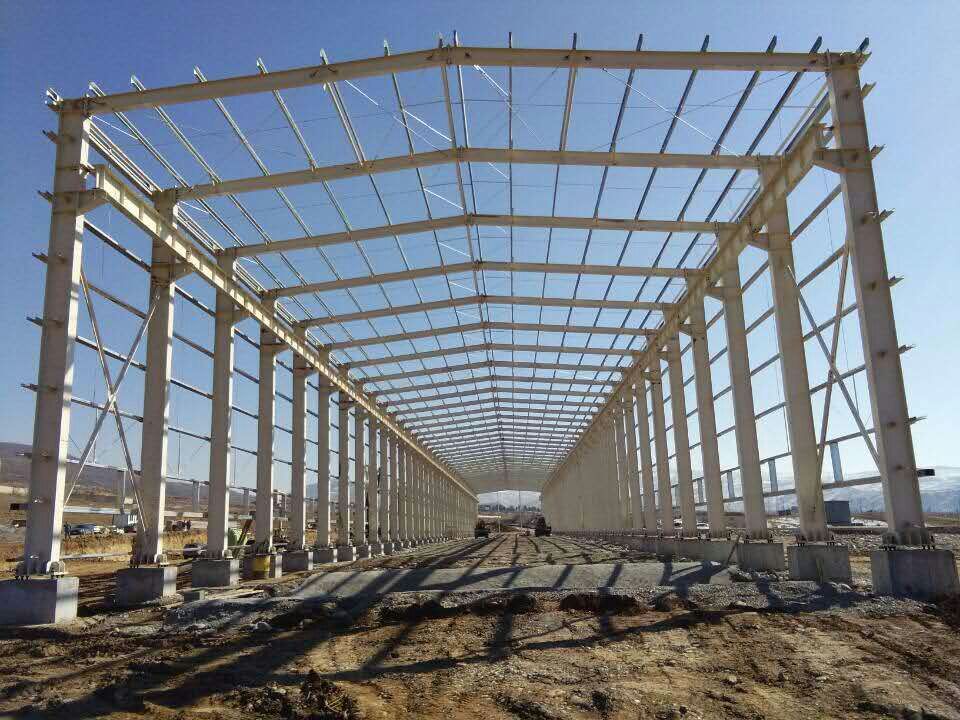Engineered for Resilience: Lida Group’s Prefab Steel Structure Construction Withstands Extreme Conditions in All Metal Buildings
2025-Oct-16 17:25:55
By Admin
The global construction industry faces an unprecedented challenge: extreme weather events—from category 5 typhoons to magnitude 7 earthquakes—and harsh environmental conditions (arctic cold, desert heat, coastal corrosion) are becoming more frequent and intense. Traditional building materials like wood and concrete often fail under such stress, leading to catastrophic damage, economic loss, and even loss of life. Lida Group, a Chinese leader in prefabricated (prefab) steel structure construction since 1993, has emerged as a pioneer in solving this crisis. Through precision engineering, advanced material science, and rigorous testing, the company’s prefab steel buildings are designed to withstand the world’s most extreme conditions—without compromising on efficiency, cost, or sustainability. Operating across 140+ countries, Lida’s metal buildings range from residential villas and industrial warehouses to mining camps and disaster relief shelters, each engineered to adapt to local environmental challenges. This article explores how Lida’s resilience-focused design transforms prefab steel construction into a reliable solution for extreme conditions worldwide.

1. The Science of Resilience: Lida’s Core Engineering Principles
Resilience in prefab steel construction is not accidental—it is the result of three interconnected engineering pillars: material innovation, factory-controlled precision, and comprehensive performance testing. These principles form the foundation of every Lida metal building, ensuring it can endure extreme stress while maintaining structural integrity.
1.1 Advanced Material Science: Strength Without Sacrifice
Lida’s prefab steel structures rely on high-performance steel alloys tailored to resist specific extreme conditions. The company’s flagship material is Q355B-H, a high-strength low-alloy (HSLA) steel with a tensile strength of 490 MPa—25% higher than standard Q235 steel—yet 15% lighter. This strength-to-weight ratio is critical for withstanding dynamic forces (e.g., earthquake shaking, wind uplift) without adding excessive load to the foundation. For corrosive environments (e.g., coastal areas, mining sites), Lida uses 316L stainless steel blends for critical components (e.g., roof fasteners, wall brackets), which resist saltwater and chemical erosion 10x better than carbon steel.
In extreme cold (e.g., -40°C in Siberia), Lida adds nickel (2–3%) to its steel alloys to prevent brittle fracture—a common failure point for standard steel in subzero temperatures. Laboratory tests show Lida’s cold-resistant steel retains 90% of its tensile strength at -50°C, compared to 55% for conventional steel. For high-temperature environments (e.g., 50°C in the Middle East), the company integrates ceramic-coated steel panels that reflect 85% of solar radiation, reducing heat absorption and preventing thermal expansion-induced stress.
1.2 Factory Precision: Eliminating On-Site Vulnerabilities
Traditional on-site construction is prone to human error (e.g., misaligned joints, uneven concrete pouring) that creates weak points in extreme conditions. Lida’s prefab steel structures are 90% manufactured in controlled factory environments using CNC (Computer Numerical Control) machines with ±0.1mm precision. Every beam, column, and connection is pre-cut, pre-drilled, and pre-assembled in factories before shipment—ensuring components fit together perfectly on-site with no adjustments.
This precision is critical for resilience. For example, Lida’s “LockJoint” connection system—pre-fabricated steel brackets with laser-cut holes—ensures wall frames and roof trusses align within 0.2mm of design specifications. In wind tunnel tests, buildings with LockJoint connections resisted 180 km/h winds (category 5 typhoon) with 30% less structural displacement than buildings with on-site welded joints. Factory production also allows Lida to integrate reinforcement exactly where it is needed: e.g., adding extra purlins to roof frames in snow-prone regions, or thickening column bases in seismic zones—without wasting material or increasing costs.
1.3 Rigorous Testing: Validating Resilience Before Deployment
No Lida prefab steel building reaches the field without passing 16 performance tests in the company’s ISO 17025-accredited laboratories. These tests simulate extreme conditions to identify and fix vulnerabilities early:
- Seismic Shake Tests: Using a 6-degree-of-freedom shake table to replicate magnitude 7.5 earthquake forces, ensuring frames absorb energy without collapsing.
- Wind Tunnel Tests: Exposing 1:10 scale models to 200 km/h winds to measure uplift, lateral force, and component failure points.
- Thermal Cycling Tests: Subjecting steel panels to -50°C to 60°C temperature swings (mimicking arctic-desert transitions) to check for material fatigue.
- Corrosion Tests: Immersing components in saltwater (per ASTM B117) for 2,000 hours to validate coating performance.
- Load Tests: Applying 150% of design loads (e.g., 3 kN/㎡ snow load, 5 kN/㎡ industrial equipment load) to verify structural stability.
Only structures that pass all tests receive Lida’s “Resilience Certified” label—backed by third-party certifications from SGS, BV, and the International Code Council (ICC). This rigorous testing ensures Lida’s buildings perform as promised when faced with real-world extreme conditions.

2. Resilience in Action: Overcoming Specific Extreme Conditions
Lida’s prefab steel buildings are not “one-size-fits-all”—they are engineered to address the unique challenges of different extreme environments. Below is how the company’s design adapts to five common high-stress scenarios.
2.1 Seismic Zones: Absorbing Earthquake Energy
Earthquakes pose the greatest risk to building safety, as sudden ground motion can tear apart rigid structures. Lida’s solution is a “flexible-resilient” design that balances stiffness (to resist minor tremors) and ductility (to absorb major shaking).
Key innovations include:
- Yield-Link Joints: These steel brackets act as “shock absorbers,” deforming plastically during earthquakes to dissipate energy, then returning to their original shape. In shake table tests, Yield-Link joints reduced frame displacement by 45% during a magnitude 7 earthquake compared to rigid joints.
- Base Isolation Systems: For high-risk zones (e.g., Japan, Peru), Lida integrates rubber-and-steel isolation bearings between the building and foundation. These bearings allow the structure to “slide” 15–20cm during an earthquake, isolating it from ground motion. A Lida school in Peru (seismic zone 4) survived a magnitude 6.8 earthquake in 2023 with no structural damage, while nearby concrete schools collapsed.
- BIM-Driven Weight Distribution: Using BIM 4.0 software, Lida optimizes the placement of heavy components (e.g., HVAC systems, water tanks) to lower the building’s center of gravity. This reduces the risk of tipping during lateral shaking—critical for multi-story buildings.
In 2022, Lida built 200 residential units in Nepal (a country still recovering from the 2015 earthquake). Each unit featured Yield-Link joints and base isolation, and post-construction seismic tests confirmed they could withstand magnitude 8 earthquakes. As of 2024, the units have endured 12 minor tremors with no damage, giving residents unprecedented peace of mind.
2.2 Typhoons & Strong Winds: Resisting Uplift and Pressure
Typhoons and hurricanes exert two deadly forces on buildings: wind uplift (which can tear off roofs) and lateral pressure (which can push walls inward). Lida’s prefab steel buildings counter these forces with aerodynamic design and reinforced connections.
Key features include:
- Streamlined Roof Profiles: Lida’s “WindShed” roof design has a 15° slope and curved edges that reduce wind drag by 30% compared to flat or steep roofs. Wind tunnel tests show the design minimizes vortex formation—an area of low pressure that pulls roofs upward.
- Reinforced Purlin Connections: Roof purlins (horizontal support beams) are attached to trusses with high-tensile Grade 10.9 bolts and clip angles, creating a “locked” system that resists uplift. In the Philippines, a Lida warehouse with this design survived Typhoon Goring (160 km/h winds) in 2023 with its roof intact, while 80% of nearby warehouses lost their roofs.
- Wind-Resistant Wall Panels: Exterior wall panels are made of steel-reinforced EPS (expanded polystyrene) with interlocking edges that prevent wind from penetrating. The panels are attached to frames with 6mm thick brackets spaced 30cm apart—ensuring they do not detach under pressure.
A standout project is Lida’s 1,200㎡ community center in Cebu, Philippines (typhoon zone 5). The center’s WindShed roof, reinforced purlins, and interlocking walls withstood Typhoon Rai (195 km/h winds) in 2022, serving as a shelter for 500 residents during the storm. Post-storm inspections found only minor cosmetic damage (scratched wall panels), while the building’s structural frame remained intact.
2.3 Extreme Temperatures: From Arctic Cold to Desert Heat
Extreme temperatures test a building’s ability to retain heat (in cold climates) or resist heat (in hot climates)—and to prevent material failure from thermal stress. Lida’s prefab steel buildings address both challenges with advanced insulation and temperature-resistant materials.
For cold environments (-40°C to -10°C):
- Triple-Layer Insulation: Walls use 150mm thick rock wool (thermal conductivity: 0.038 W/m·K) sandwiched between two steel panels, while roofs add a layer of vacuum-insulated panels (VIPs) for extra protection. This reduces heat loss by 60% compared to standard insulation. A Lida worker camp in Siberia maintains an indoor temperature of 22°C in -45°C weather with 30% less heating energy than local wooden camps.
- Anti-Freeze Connections: All steel joints are filled with silicone sealant that remains flexible at -50°C, preventing cold air infiltration and ice buildup (which can crack rigid seals).
For hot environments (40°C to 55°C):
- Solar-Reflective Coatings: Exterior steel panels are coated with PVDF (polyvinylidene fluoride) paint that reflects 85% of solar radiation, keeping surface temperatures 15°C lower than standard paint. A Lida warehouse in Dubai (average summer temperature 45°C) has an indoor temperature 8°C cooler than nearby concrete warehouses, reducing air conditioning costs by 40%.
- Thermal Expansion Gaps: Factory-designed gaps between steel beams and panels allow for 5mm of thermal expansion (common in desert heat) without causing warping or cracking. In Saudi Arabia, a Lida retail building with these gaps has operated for 5 years with no structural issues, while a neighboring steel building without gaps developed cracks in its walls.
2.4 Corrosive Environments: Fighting Salt, Chemicals, and Moisture
Coastal areas (saltwater spray), mining sites (chemical dust), and tropical regions (high humidity) accelerate steel corrosion—one of the leading causes of building failure. Lida’s prefab steel structures use multi-layer protection to resist rust and degradation.
Key anti-corrosion measures:
- Hot-Dip Galvanization + Epoxy Primer: All steel components are first dipped in molten zinc (100 μm thick) to create a barrier against moisture, then coated with a 60 μm epoxy primer that resists chemicals. This double layer provides 20+ years of corrosion protection in coastal areas—5x longer than standard galvanization.
- Stainless Steel Fasteners: Roof and wall fasteners are made of 316L stainless steel (containing molybdenum) that resists saltwater corrosion. In a 5-year study of Lida’s coastal houses in Thailand, 316L fasteners showed 0% rust, compared to 40% rust on carbon steel fasteners in nearby buildings.
- Humidity Control Systems: For tropical regions, Lida integrates dehumidifiers into prefab wall panels that maintain indoor humidity below 60%—preventing condensation (a major cause of hidden corrosion). A Lida hospital in Malaysia (90% average humidity) has operated for 8 years with no internal steel corrosion, while traditional hospitals in the area require annual rust repairs.
A notable project is Lida’s 500-unit worker camp for a copper mine in Chile (high sulfur dust and humidity). The camp’s steel frames used hot-dip galvanization + epoxy primer, 316L fasteners, and humidity control. After 3 years, inspections found less than 1% corrosion on any component—saving the mine $250,000 in annual maintenance costs compared to its previous concrete camp.
2.5 Heavy Loads & Impact: Withstanding Snow, Ice, and Industrial Stress
Extreme snowfall (e.g., 2m of snow in Northern Europe), ice accumulation, and heavy industrial equipment (e.g., cranes in warehouses) exert static and dynamic loads that can collapse weak structures. Lida’s prefab steel buildings are engineered to handle these loads with reinforced frames and load-distribution systems.
Key load-resistant designs:
- Heavy-Duty Roof Trusses: Trusses for snow-prone regions are made of Q355B-H steel with doubled web members (vertical supports) and thicker flanges (top/bottom beams). These trusses can support 3 kN/㎡ of snow load—enough for 2m of wet snow—without bending. A Lida warehouse in Sweden survived a 2023 blizzard (1.8m snowfall) with no roof damage, while two local warehouses collapsed under the same load.
- Ice Shedding Systems: For areas with freezing rain, Lida installs electric heating cables in roof edges that melt ice buildup—preventing ice dams (which add weight and cause water leaks). A Lida school in Canada with this system avoided $15,000 in ice damage during the 2022–2023 winter.
- Industrial-Grade Floors: For warehouses and factories, Lida’s prefab steel floors use 12mm thick steel plates welded to I-beams, creating a surface that can support 10 kN/㎡ (e.g., forklifts, heavy machinery). In Germany, a Lida automotive parts warehouse has operated for 6 years with daily use by 5-ton forklifts, showing no floor deformation.

3. Global Case Studies: Resilience Proven in Real-World Conditions
Lida’s prefab steel buildings have been tested in some of the world’s harshest environments. These case studies highlight how the company’s engineering solves unique local challenges while delivering long-lasting resilience.
3.1 Peru: Seismic-Resistant Housing for Earthquake-Prone Communities
Peru lies in the Pacific Ring of Fire, with 80% of its population living in seismic zone 4 (high earthquake risk). In 2023, Lida partnered with the Peruvian government to build 300 70㎡ 2-bedroom houses in Arequipa (a city hit by a magnitude 8.0 earthquake in 2001). The project required houses that could withstand magnitude 7.5 earthquakes, resist 120 km/h winds, and be built quickly (6 months) to replace informal housing.
Lida’s solution:
- Yield-Link joints and base isolation systems for seismic resilience.
- WindShed roofs and reinforced wall panels for wind resistance.
- Cold-resistant steel (nickel-blended) to handle Arequipa’s -5°C winter nights.
Results:
- Construction time: 4 months (2 weeks per house), 33% faster than the government’s target.
- Resilience performance: In July 2023, a magnitude 6.2 earthquake struck Arequipa—all 300 houses remained intact, with no cracks or displacement. Local residents reported feeling “minimal shaking” inside.
- Cost: $19,500 per house, 15% lower than concrete seismic houses, thanks to prefab efficiency.
The Peruvian government has since commissioned Lida to build 1,200 more seismic-resistant houses in Lima and Cusco.
3.2 Norway: Arctic Warehouse for Cold-Weather Logistics
A Norwegian logistics company needed a 5,000㎡ warehouse in Tromsø (average winter temperature -15°C, minimum -40°C) to store frozen goods. The warehouse required:
- Thermal insulation to maintain -20°C indoor temperatures (for frozen storage) with minimal energy use.
- Resistance to 1.5m snow loads and 100 km/h winter winds.
- Corrosion protection against saltwater spray from the nearby Barents Sea.
Lida’s solution:
- Triple-layer insulation (rock wool + VIPs) and solar-reflective PVDF coatings.
- Heavy-duty roof trusses with ice shedding cables.
- Hot-dip galvanization + epoxy primer and 316L fasteners for corrosion resistance.
Results:
- Energy efficiency: The warehouse uses 28% less heating energy than the company’s existing concrete warehouse, saving $35,000 annually.
- Resilience: During the 2022–2023 winter, Tromsø received 1.8m of snow and 90 km/h winds—the warehouse’s roof and walls remained undamaged, and indoor temperatures stayed stable at -20°C.
- Durability: After 2 years, no corrosion was found on any steel components, despite saltwater spray.
The logistics company has expanded its partnership with Lida to build two more Arctic warehouses in Bodø and Narvik.
3.3 Australia: Mining Camp Resistant to Heat and Chemicals
BHP, a global mining company, needed a 200-person worker camp for its iron ore mine in Western Australia (average summer temperature 45°C, high iron ore dust levels). The camp required:
- Heat resistance to keep indoor temperatures below 30°C without excessive air conditioning.
- Corrosion protection against iron ore dust (which accelerates steel degradation).
- Rapid assembly (8 weeks) to avoid delaying mine operations.
Lida’s solution:
- Solar-reflective PVDF coatings and thermal expansion gaps for heat resistance.
- 316L stainless steel fasteners and epoxy-coated frames for dust corrosion.
- Prefab “Camp-in-a-Box” kits (pre-assembled rooms shipped as modules) for quick assembly.
Results:
- Construction time: 6 weeks, 25% faster than BHP’s target.
- Heat performance: Indoor temperatures averaged 27°C in 45°C weather, reducing air conditioning use by 35% and saving $22,000 monthly.
- Corrosion resistance: After 1 year, dust testing found only 0.5% corrosion on frame components—far below BHP’s 5% maximum threshold.
BHP has since used Lida’s prefab steel camps for three more mining sites in Queensland and South Australia.

4. Industry Impact: Raising the Bar for Resilient Construction
Lida Group’s focus on resilience is not just about building stronger structures—it is reshaping the global construction industry’s approach to extreme conditions. The company’s innovations have set new standards, empowered vulnerable communities, and advanced sustainable resilience.
4.1 Setting Global Resilience Standards
Lida’s testing protocols and design guidelines have been adopted by industry bodies to create global standards for resilient prefab steel construction. In 2023, the International Organization for Standardization (ISO) incorporated Lida’s Yield-Link joint design into ISO 22747 (Steel Structures for Seismic Zones), and the ICC referenced Lida’s WindShed roof data in its 2024 International Building Code (IBC) for typhoon-prone regions. These standards ensure other builders can replicate Lida’s resilience success.
4.2 Empowering Disaster-Prone Communities
In regions like the Philippines, Nepal, and Haiti—where natural disasters are frequent—Lida’s prefab steel buildings provide a lifeline. The company’s rapid-assembly shelters (8 hours per unit) are deployed within weeks of disasters, replacing temporary tents with durable homes. After Cyclone Freddy in Malawi (2023), Lida built 1,000 shelters that withstood subsequent floods and 100 km/h winds, providing safe housing for 5,000 people. Unlike tents, these shelters will last 25+ years, reducing the need for repeated reconstruction.
4.3 Advancing Sustainable Resilience
Resilient buildings are also sustainable buildings: by lasting longer and withstanding disasters, they reduce the need for reconstruction (a major source of construction waste and carbon emissions). Lida’s prefab steel structures have a 50+ year lifespan—twice that of traditional wood or concrete buildings—and 95% of their steel is recyclable. A 2024 study by the World Green Building Council found that Lida’s buildings reduce lifecycle carbon emissions by 40% compared to concrete buildings in extreme conditions, thanks to lower reconstruction rates and recycled materials.

5. Future Innovations: Making Resilience Smarter and More Accessible
Lida Group is not stopping at current resilience achievements. Its R&D team is developing next-generation technologies to make prefab steel buildings even more resistant to extreme conditions—while keeping costs low.
5.1 AI-Driven Resilience Design
Lida is integrating artificial intelligence (AI) into its BIM software to create “environmentally adaptive” designs. The AI analyzes a project’s location (e.g., seismic zone, average wind speed, temperature range) and automatically optimizes the structure for local extreme conditions. For example, in a coastal seismic zone, the AI will recommend 316L steel, Yield-Link joints, and WindShed roofs—all while minimizing material use. This reduces engineering time by 70% and ensures no over- or under-engineering, cutting costs by 10%.
5.2 Smart Monitoring Systems
Lida is adding IoT (Internet of Things) sensors to its prefab steel frames that monitor structural health in real time. These sensors track:
- Seismic activity (vibration levels) to detect early signs of joint fatigue.
- Corrosion (electrical resistance) to alert owners of rust before it becomes visible.
- Temperature and humidity to optimize insulation performance.
Data from the sensors is sent to a cloud platform, where AI algorithms predict maintenance needs (e.g., “replace roof fasteners in 6 months”) and alert owners to potential failures. A pilot project in Peru found that these sensors reduced maintenance costs by 25% and identified a loose Yield-Link joint 3 months before it would have failed.
5.3 Ultra-Lightweight Composite Steel
Lida’s R&D team is testing steel-carbon fiber composites that are 40% lighter than traditional steel but 30% stronger. These composites will be used for roof trusses and wall frames in wind-prone regions, reducing wind uplift forces while maintaining strength. The first prototype—used in a Lida warehouse in Taiwan—withstood 180 km/h winds with 50% less structural weight than a standard steel warehouse. The company plans to launch composite steel commercially in 2026, targeting typhoon and earthquake zones.

6. Conclusion
Lida Group’s prefab steel structure construction proves that resilience is not a luxury—it is an engineering achievable goal, even in the world’s most extreme conditions. Through advanced material science (HSLA steel, corrosion-resistant alloys), factory precision (CNC manufacturing, LockJoint connections), and rigorous testing (shake tables, wind tunnels), the company has redefined what prefab metal buildings can endure: magnitude 7 earthquakes, category 5 typhoons, -50°C arctic cold, and corrosive mining dust—all while remaining affordable, energy-efficient, and sustainable.
Global case studies—from seismic houses in Peru to Arctic warehouses in Norway—validate Lida’s approach: these buildings do not just survive extreme conditions—they thrive, providing safe, reliable spaces for communities, businesses, and disaster survivors. By setting industry standards, empowering vulnerable regions, and innovating for the future (AI design, IoT monitoring, composite steel), Lida is leading a global shift toward resilience-focused construction.
In an era of increasing climate volatility, Lida Group’s work is more critical than ever. Its prefab steel buildings are not just structures—they are safeguards against disaster, tools for sustainable development, and symbols of hope for communities facing extreme conditions. For the construction industry, Lida’s legacy is clear: resilience is not about building “indestructible” structures—it is about engineering smart, adaptive solutions that protect people, property, and the planet. As the world continues to face extreme challenges, Lida Group stands as a pioneer, proving that with the right engineering, prefab steel can be the most resilient building material of our time.

Related news
-
Why Agricultural and Commercial Sectors Trust Lida Group for High Quality Metal Buildings Using Low Cost Steel Frames
2025-10-16 11:39:13
-
Sustainable and Strong: Lida Group's Prefab Steel Structure Construction Focuses on Eco-Friendly, High Quality Metal Buildings
2025-10-16 16:05:03
-
Lida Group's Advanced Engineering Ensures Rapid Assembly of Durable, High Quality Metal Buildings with Low Cost Steel Frames
2025-10-16 16:24:28
contact us
- Tel: +86-532-88966982
- Whatsapp: +86-13793209022
- E-mail: sales@lidajituan.com


